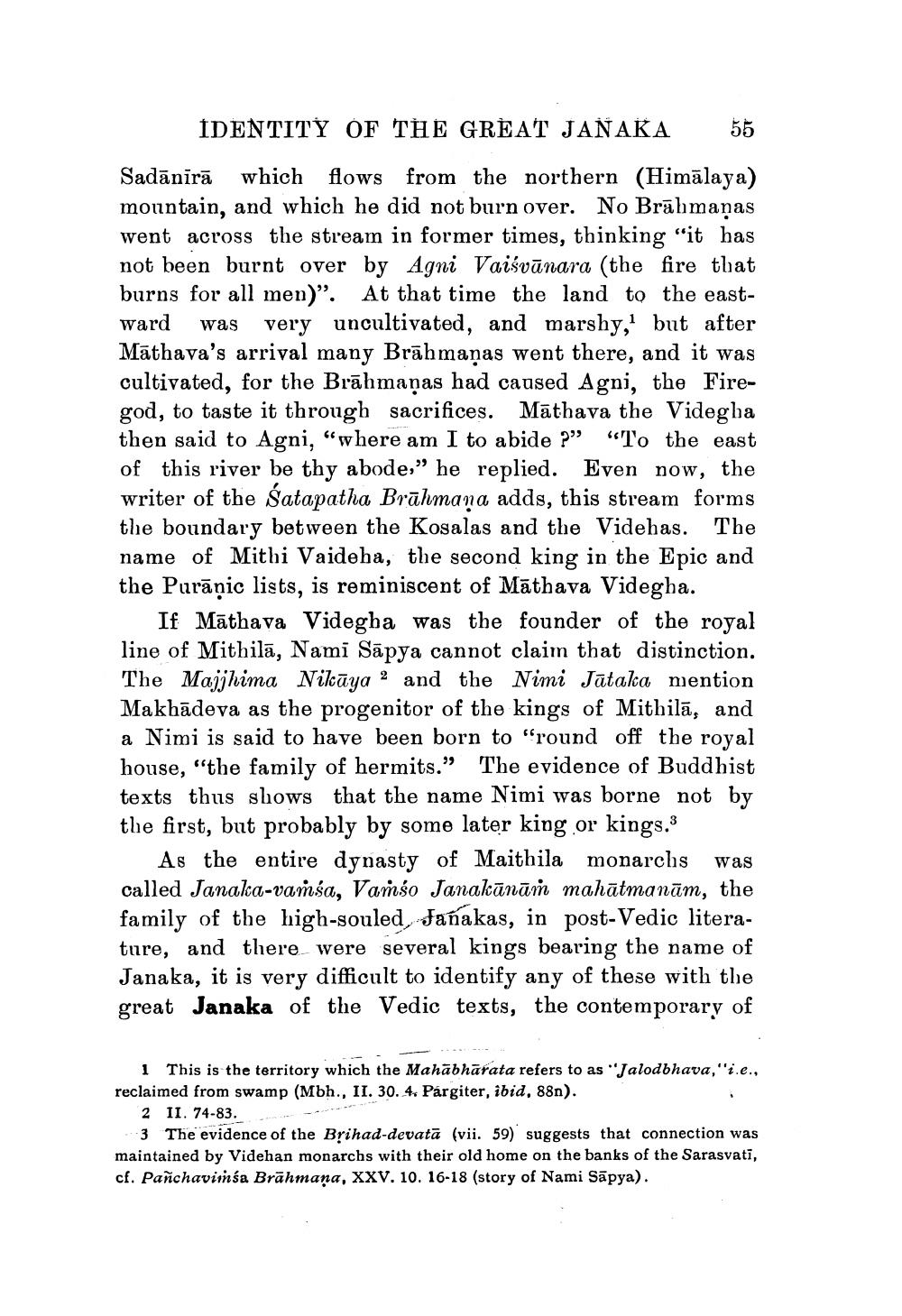________________
IDENTITY OF THE GRÈAT JANAKA 55 Sadānīrā which flows from the northern (Himālaya) mountain, and which he did not burn over. No Brāhmaṇas went across the stream in former times, thinking "it has not been burnt over by Agni Vaišvānara (the fire that burns for all men)". At that time the land to the eastward was very uncultivated, and marshy, but after Māthava's arrival many Brāhmanas went there, and it was cultivated, for the Brāhmaṇas had caused Agni, the Firegod, to taste it through sacrifices. Māthava the Videgha then said to Agni, "where am I to abide ?" "To the east of this river be thy abode,” he replied. Even now. the writer of the Satapatha Brāhmana adds, this stream forms the boundary between the Kosalas and the Videhas. The name of Mithi Vaideha, the second king in the Epic and the Purāṇic lists, is reminiscent of Māthava Videgha.
If Māthava Videgba was the founder of the royal line of Mithila, Nami Sāpya cannot claim that distinction. The Majjhima Nilcāya ? and the Nimi Jātala mention Makhādeva as the progenitor of the kings of Mithilā, and a Nimi is said to have been born to 'round off the royal house, “the family of hermits." The evidence of Buddhist texts thus shows that the name Nimi was borne not by the first, but probably by some later king or kings.3
As the entire dynasty of Maithila monarchs was called Janaka-vaṁśa, Varso Janakānām mahātmanām, the family of the high-souled, Fanakas, in post-Vedic literature, and there were several kings bearing the name of Janaka, it is very difficult to identify any of these with the great Janaka of the Vedic texts, the contemporary of
1 This is the territory which the Mahabharata refers to as "Jalodbhava,"i.e., reclaimed from swamp (Mbh., II. 30. 4. Pargiter, ibid, 88n).
2 II. 74-83.
3 The evidence of the Brihad-devatā (vii. 59) suggests that connection was maintained by Videhan monarchs with their old home on the banks of the Sarasvati, cf. Panchavimśa Brāhmana, XXV. 10. 16-18 (story of Nami Sāpya).




